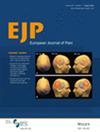The Impact of Pain on Everyday Activities of People With Hypermobility Spectrum Disorders or Hypermobility Ehlers Danlos Syndrome
Abstract
Background
This study describes aspects of pain and how pain affects everyday life and examines the relation between chronic pain and activity limitations in people with hypermobility spectrum disorders (HSD) or hypermobility Ehlers Danlos syndrome (hEDS).
Methods
This cross-sectional study used data from 2016 to 2021 obtained from the Swedish quality registry for pain rehabilitation (SQRP), comparing those with HSD/hEDS with the larger group of people with mixed chronic pain conditions as a reference group (RG).
Results
Of the 43,801 people registered in the SQRP, 1211 (2.8%) were diagnosed with HSD/hEDS (88.9% women). The mean age of the HSD/hEDS group was younger (36.3 ± 11.8) than the RG (45.7 ± 12.8). The HSD/hEDS group had a statistically significant (p < 0.001) earlier onset of pain (calculated in years) in contrast to the RG. In the HSD/hEDS group, 80.1% had persistent pain; in the RG, 74.2% had persistent pain. The HSD/hEDS group reported more pain locations (20.0 ± 7.9) than the RG (14.8 ± 8.8). The HSD/hEDS group reported more problems performing leisure, social, and household activities than the RG; however, pain intensity was statistically significantly lower (p < 0.001) in the HSD/hEDS related to the RG.
Conclusions
There were indications that pain affected daily activities for people with HSD/hEDS, who had earlier onset of pain, marked more pain locations, and had more persistent pain, but pain intensity was not as decisive in contrast to the RG.
Significance Statement
In a comparison yielding statistically significant results (p < 0.001), persons with hypermobility spectrum disorder (HSD) or hypermobility Ehlers-Danlos syndrome (hEDS) reported earlier pain onset, longer pain durations, and a greater number of pain locations but surprisingly, lower pain intensity than the reference group which consisted of a mixed group of pain conditions. These pain characteristics affected daily activities, indicating a substantial impact on daily life for those with HSD/hEDS.


 求助内容:
求助内容: 应助结果提醒方式:
应助结果提醒方式:


